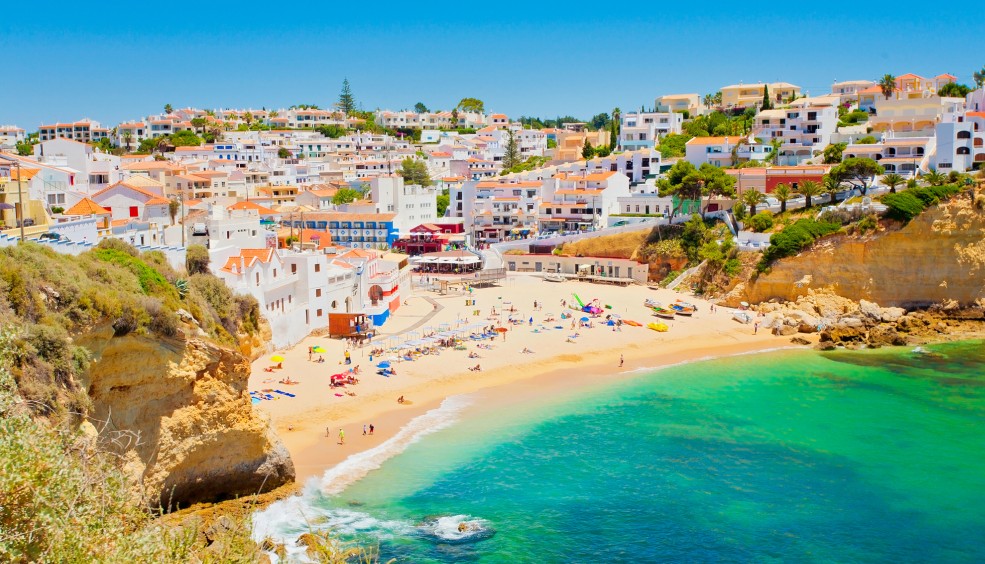Original ideas for your visit to London
You could visit London twenty times a year and discover a completely new city full of fascinating places every time. The 32 boroughs of the UK’s capital are home to 9 million people–half of whom originally hail from other countries–and up to 300 different languages are spoken in its streets. This city of cities, this world in miniature centred around the Thames has so much more to offer than just fish and chips, a walk in Hyde Park, a West End musical or a visit to the British Museum.
more info7 cheap destinations to enjoy before summer arrives
Do you fancy going away before the official summer holidays, to beat the crowds? Make a note of these ideas.
more info7 places in Jordan you can’t afford to miss
Petra, Amman, Jerash, castles, Roman ruins, the Dead Sea, souks, narrow streets, deserts... Jordan has so much to offer and you can discover it all on a short trip, as everything is close by and transport links are good.
more infoTasty Eating in Palermo’s Markets and Other Spots
Palermo strikes a curious balance between large shopping precincts and narrow streets exuding romantic decadence, between makeshift street grill-stalls throbbing with electronic music and leisurely faddish restaurants. The city is, at times, caught up in another era, but also in the present, while aspiring to a better future.
A city of contrasts, influences and cultural convergence, Palermo has a lot to say in gastronomic terms. Both pasta and pizza are a mainstay of local cuisine, as they are in the rest of Italy, although here they have been revamped, displaying surprising traits, and combined with other local dishes that draw heavily on the sea or trip and offal. And, it is immediately evident the moment you walk into any of its markets, a must-see attraction if you happen to journey here.
Vucciria, Il Capo and Ballaró
Palermo’s three markets. They open every day except Sunday, from early in the morning until nightfall. As the stall produce becomes depleted, they clear up and bolt the small garages that act as storerooms. The markets are best visited in the morning, if you want to enjoy them in full swing. There’ll be vegetables you have likely never seen before, as well as spices, cheeses, a wealth of different olives, peppers, huge swordfish heads…
You can try street specialities such as pane con la milza or pani ca’ meusa (a sandwich of spleen fried in lard, served up with caciocavallo or ricotta cheese and lemon), arancini (fried rice balls, usually stuffed with meat) and panelle (gram flour fritters).
You could also take a breather and enjoy a marsala (vintage wine) at such bars as the legendary Taverna Azzurra, in the Vucciria, a meeting point every weekend after nightfall, when the market streets have been taken over by the youth, birras, music, table football and grills stuffed with stigghiola (tripe seasoned with salt, pepper and lemon, with or without bread).
You can stroll through the markets, sip a marsala wine and eat stigghiola. But you can also trek across the whole city and take note of some of the eateries worth visiting.
Da Diego. Pizzas and more, on the Via della Libertá. Not a tourist in sight and filled to bursting. An assortment of thick-dough pizzas stuffed with ingredients. We go for the one with mozzarella, sausage, spinach and mushrooms, accompanied by some swordfish involtini (rolls) with aubergine sauce, and sfinzione (Sicilian pizza) stuffed with ricotta and pesto. This is a type of focaccia topped with a crust of tomato, caciocavallo cheese, anchovy, onion and aromatic herbs.
Trattoria Michele & Jolanda. Just like home. We expected home cooking and, boy, did we get it! There you’ll be welcomed by Michele in the dining-room and Jolanda in the kitchen, sitting down at the table as if she were a guest. We order caponata (aubergine and other vegetables in tomato sauce), caprese (tomato, fresh mozzarella and basil) and a cold pepper salad as antipasti. Then pasta alla norma (tomato, aubergine and other vegetables), accompanied by le sarde, a typical Palermo recipe based on fresh sardines and fennel. And, not to be disloyal to the traditional repertoire, we round it off with cannoli– crisp, rolled pastry wafers filled with ricotta cheese. If you’re looking for an entertaining, lively, tasty, homemade meal at a good price, don’t fail to come here. It’s on the Via Cappuccini 12.
Osteria Mangia e Bevi. Quaint and pleasant. Beyond the family milieu we come to a trendier restaurant, but without foregoing fresh, wholesome cuisine, of course. We can recommend this restaurant for its fresh pasta, its fried pasta and its agglassati – two traditional ways of using up leftovers from yesterday’s dishes. Ideal, too, for tasting local wines and a marvellous cannolo served in a glass.
Other Pointers
When it comes to lodgings, we can recommend the Castelnuovo area, set in a shopping precinct and just a stone’s throw from the old town. We stayed at the Hotel Politeama, which is functional and provides wonderful, congenial service and a breakfast not lacking in sweet, savoury, fruit, jams with a host of flavours, different kinds of bread and even cannoli! The hotel looks onto a large piazza and the airport bus stops right outside the door, giving you a headstart if you want to move about without wasting time.
If you have the odd day left over, you are encouraged to get out of Palermo and discover a bit of Sicily. To accomplish this it is wise to get in touch with Ulisse, which organises regular, private outings from there. They really look after you – you won’t have any language difficulties and will be spared hassles when you need to use public transport and pick your way through the island’s chaotic traffic.
A destination worth discovering – Check out our flights here.
Text and photos by Silvia Artaza (Gastronomistas)
more info




